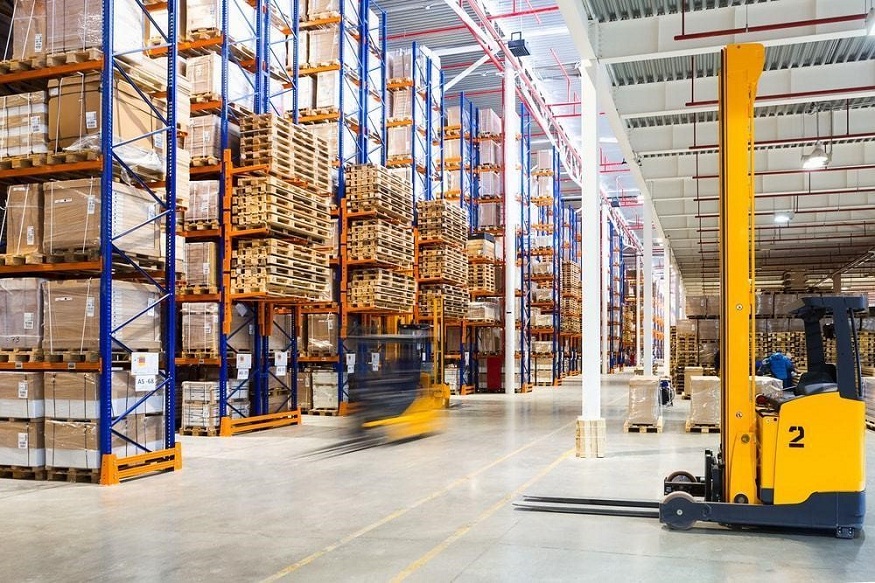Warehousing Equipment — The Ultimate Guide For Enhanced Efficiency

Warehouses play a critical role in modern supply chains because they allow for the storage, organization, and transportation of goods. Whether operating a small storage unit or running a large distribution center, the right warehousing equipment covers every aspect of effective warehousing, helping to increase efficiency, reduce overheads, and enhance workplace safety. Material handling equipment is beneficial in logistics and focuses on improving operational efficiency and enhancing logistics processes by investing in quality material handling equipment. In this guide, we will explore the critical equipment for a smooth warehouse flow.
Warehousing Equipment: Why is it Indispensable?
Moving, storing, and retrieving goods are the core functions of any warehouse operation, and the success of any warehouse operation in this regard is entirely dependent on this process. Without the proper warehousing equipment, employees are unnecessarily overworked, errors are made and productivity levels drop. At the same time, an optimized set-up of the warehouse is much more manageable for inventory operations, faster shipping as well as safer working conditions. Mobile scale solutions can help scale with business growth while ensuring the durability needed to last through hours of operation.
Every piece of material handling equipment, from forklifts to storage racks, is essential for the efficient functioning of a warehouse. The right set of tools will help you reduce manual labor, enhance automation, and prevent damages to goods. In addition, using good warehousing equipment helps to keep operations in line with industry practices and regulations, thus avoiding accidents at work.
Forklifts:Your Warehouse Workhorse
To this end, one of the most necessary pieces of warehousing equipment is the forklift, which enables workers to quickly and efficiently move heavy loads. There are different types of these machines such as electric forklifts, diesel forklifts as well as LPG forklifts. Read MoreAs for which is better: It may depend on the warehouse environment and load requirements, as each has its advantages.
Their low noise levels and absence of emissions make electric forklifts highly suitable for indoor operations. Conversely, diesel forklifts are best used outdoors and for heavy lifting. Forklifts are selected based on the unique requirements of each warehouse — such as load capacity, maneuverability, and operating environment.
Maintaining lift trucks, if done correctly assures safety and longevity. Like any other machine, with a lack of and when proper upkeep, mechanical failures can cause enough operational downtime to reduce overall warehouse efficiency. Furthermore, operators must also be trained to operate forklifts in any way to avoid accidents and damage to stock.
Conveyor systems For Automated Handling
The role of conveyor systems in warehouse and supply chain management is critical. Such systems are especially useful in high-volume sites where manual transport would be impractical. For example, implementing conveyor belts within a warehouse helps businesses save time for sorting, packaging, and shipping.
Types of Conveyor System: There are different types of conveyor system such as belt conveyor, roller conveyor, overhead conveyor, etc. The type of conveyor system is decided based on the nature of goods transported, warehouse design, and automation needs. Load Excel, PowerPoint, and Microsoft Word, by developing top-notch conveyor systems, to reduce handling errors and improve the efficiency of the work process.
Storage Racks & Shelving Solutions
Proper warehousing storage solutions are the foundation of an organized warehouse. Storage racks and shelving units maximize the square footage available, keeping stock easily accessible. Warehouses soon become cluttered without any structured storage, resulting in wastage of time, effort, and losses.
Different kinds of storage racks include pallet racks, cantilever racks, and push-back racks. When it comes to storage solutions, one of the most common to see is pallet racking — designed for easy access to goods and making the most of vertical space. Cantilever racks are perfect for storing long and bulky objects like lumber and pipes. The appropriate storage system will depend on what the storage is and how often it needs to be accessed.
Conclusion
The material handling equipment makes it easier to find the right files and folders when they are needed, and improves the overall efficiency of storage systems through proper labeling and categorization. Order fulfillment speeds up and operational bottlenecks are avoided when workers can quickly locate and retrieve products.



